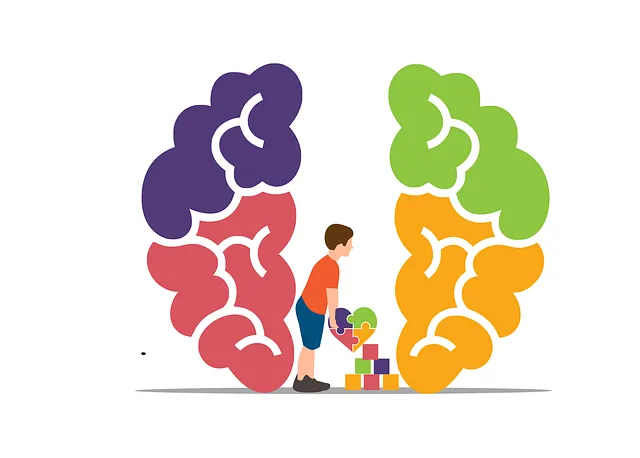Public awareness campaigns led by Kaiser Permanente behavioral health centers in Littleton play a vital role in educating communities about mental well-being and self-care, bridging gaps between individuals and essential resources. Through creative messaging, engaging content, and practices like mindfulness meditation, these campaigns enhance self-awareness, combat stigma, and promote early intervention. The center emphasizes the importance of tailored communication strategies for specific demographics, using relatable narratives and accessible information to encourage action. They also utilize multi-media approaches and robust evaluation methods to track KPIs and societal impacts, fostering a culture of care and resilience in Littleton.
Public awareness campaigns are powerful tools for educating communities and driving positive change. This article explores the art and science behind creating impactful initiatives, focusing on the unique perspective of Kaiser Permanente Littleton, a leading behavioral health center. We delve into strategic communication approaches, creative visuals, and measurement techniques to ensure success. By understanding public behavior and tailoring messages accordingly, campaigns like Kaiser’s can raise awareness, foster behavioral shifts, and ultimately improve community well-being, especially in the realm of mental health services.
- Understanding Public Awareness: The Role of Educational Campaigns
- Kaiser Permanente Littleton: A Behavioral Health Center's Perspective
- Designing Effective Communication Strategies for Target Audiences
- Incorporating Creative Visuals and Media for Maximum Impact
- Measuring Success: Evaluating the Effectiveness of Public Awareness Campaigns
Understanding Public Awareness: The Role of Educational Campaigns

Public awareness campaigns play a pivotal role in educating communities about various issues, with one such notable example being the work done by Kaiser Permanente behavioral health centers, like the one in Littleton. These centers have been at the forefront of promoting mental well-being and self-care through targeted initiatives. By design, public awareness campaigns foster understanding and encourage positive behavioral changes. They serve as a bridge between individuals and essential resources, such as those offered by Kaiser Permanente, which provide valuable tools for navigating challenges related to mood management, stress reduction, and overall emotional health.
Educational campaigns are instrumental in enhancing self-awareness exercises and promoting mindfulness meditation practices. Through creative messaging and engaging content, they can help individuals recognize signs of distress and introduce effective coping strategies. For instance, these campaigns might highlight the importance of regular practice for Mood Management, encouraging participants to explore techniques that have proven beneficial for many—all while emphasizing the availability of professional support at nearby health centers like Kaiser Permanente Littleton.
Kaiser Permanente Littleton: A Behavioral Health Center's Perspective

Kaiser Permanente Littleton, a renowned behavioral health center, offers valuable insights into the impact and challenges of public awareness campaigns for mental health initiatives. As a leading provider of trauma support services and mood management programs, they have witnessed firsthand how well-crafted campaigns can shift societal perceptions and encourage individuals to seek help. The center’s experience highlights the potential for increased community engagement when addressing sensitive topics like behavioral health.
Through their work, Kaiser Permanente Littleton emphasizes that successful public awareness campaigns require a deep understanding of the target audience. By tailoring messages to specific demographics, these campaigns can effectively combat stigma, promote early intervention, and connect individuals with the necessary resources. The center’s expertise in developing targeted strategies for various mental health conditions ensures that public awareness efforts are not only informative but also empowering, ultimately contributing to the development of a more supportive and informed community.
Designing Effective Communication Strategies for Target Audiences

Designing effective communication strategies is key to successful public awareness campaigns, especially when targeting specific audiences like the community around a Kaiser Permanente behavioral health center in Littleton. Understanding the unique needs and characteristics of each target group is essential. For instance, messaging for a campaign aimed at young adults might focus on encouraging open conversations about mental health through peer support networks, while a campaign targeting seniors could emphasize the importance of early intervention and access to local resources.
Tailoring content ensures that the message resonates with the audience, fostering engagement and action. Incorporating elements like relatable stories, positive thinking strategies, and easily accessible information can significantly enhance the impact of public awareness campaigns. By doing so, the Kaiser Permanente behavioral health center in Littleton can contribute to the broader goal of public awareness campaigns development, promoting mental health awareness and creating a more supportive environment for individuals seeking mental health awareness and positive thinking resources.
Incorporating Creative Visuals and Media for Maximum Impact

Incorporating creative visuals and media is a powerful strategy for public awareness campaigns, especially when focusing on sensitive topics like mental wellness. The Kaiser Permanente behavioral health center in Littleton understands this, utilizing engaging visual content to capture attention and convey important messages effectively. By blending captivating imagery with compelling narratives, they create impactful resources that resonate with their audience.
For instance, their Mental Wellness Podcast Series Production incorporates vibrant visuals alongside expert interviews and personal stories, making complex concepts accessible and relatable. This multi-media approach not only enhances understanding but also fosters a sense of community and inner strength development. Similarly, Self-Awareness Exercises, when presented visually, can be more engaging and memorable, encouraging individuals to prioritize their mental health journey. Such creative tactics ensure the campaign’s message reaches a broader spectrum of people, fostering positive behavioral changes.
Measuring Success: Evaluating the Effectiveness of Public Awareness Campaigns

Measuring success is a critical aspect of evaluating the effectiveness of public awareness campaigns. At Kaiser Permanente behavioral health center Littleton, we employ robust evaluation methods to assess the impact and reach of our initiatives. This involves tracking key performance indicators (KPIs) such as campaign engagement metrics, changes in public knowledge and attitudes, and the number of individuals seeking support or participating in relevant programs. By utilizing these data-driven approaches, we can identify what works and what needs improvement, ensuring that our campaigns are making a tangible difference in promoting mental wellness.
In addition to traditional KPIs, we also consider the broader societal impact of our public awareness efforts. This includes examining increases in referral rates to mental health services, improvements in crisis intervention guidance availability, and the development of Mental Wellness Coaching Programs. Moreover, we integrate Compassion Cultivation Practices into our campaigns, aiming to foster a sense of community support and understanding for individuals facing behavioral health challenges. Such holistic assessments help us create sustainable solutions that resonate with audiences and drive meaningful change.
Public awareness campaigns are powerful tools for empowering communities, as demonstrated by the successful initiatives at Kaiser Permanente Littleton, a leading behavioral health center. By understanding the target audience and employing strategic communication, creative visuals, and thorough evaluation, organizations like Kaiser can effectively promote behavioral health awareness. These efforts not only educate the public but also encourage positive behaviors, ultimately leading to healthier communities. This holistic approach, as illustrated by the various sections of this article, is key to creating impactful and lasting change in public health discourse.






